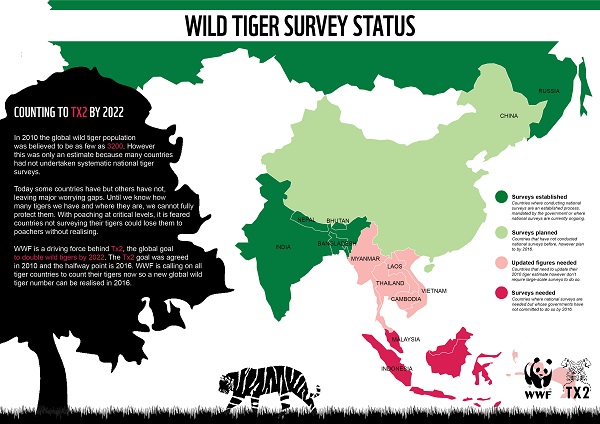Today is Tiger Day, the day of the Tiger. But there is little to celebrate: in a century we have almost completely exterminated this majestic feline. The wild tiger population has declined by 97% in the past 100 years and could completely disappear in the next decade if the trend is not reversed quickly.
He is about to end up run over, his mother saves him
Today is Tiger Day, the day of the Tiger. But there is little to celebrate: in a century we have almost completely exterminated this majestic feline. The wild tiger population has declined by 97% over the past 100 years and could completely disappear in the next decade if the trend is not reversed quickly.
This is the denunciation of the WWF. But how many tigers, then, are there in nature today? It is not known. In fact, there is a complete lack of data for the populations present in Malaysia, Indonesia, Thailand, Myanmar, Laos, Cambodia and Vietnam.
The tiger is undoubtedly one of the most endangered species, above all because of poaching. Along with ivory and rhino horn, tiger fur and bones are in high demand across Asia. Thus, the different wild populations are faced with the increasingly concrete risk of extinction in some countries, also due to the lack of precise information on the status of populations. A lack that does not allow, in fact, to define the urgent and mandatory actions to be promoted.
In St. Petersburg during the 2010 'Tiger Summit', when all countries still interested in the presence of the tiger committed themselves to the goal Tx2 - double the number of wild tigers by 2022 - the world's wild tiger population was estimated at a minimum of 3200 individuals.
"This figure was just an estimate," said Michael Baltzer, head of the WWF Tigers Alive Initiative. “In 2010 many countries they had not undertaken systematic national investigations of the tiger. Now many have done or are doing it, but not all, leaving large gaps in our knowledge and doubts about the real status that seems more and more serious every day. Until we know how many tigers exist and where they are, we cannot know the best way to protect them. "
It is feared, therefore, that countries that do not carry out national surveys could losing their tiger populations to poachers without realizing it. This may already have happened for some countries where the signs of presence of tigers even in protected areas are less and less. Currently the number of wild tigers are known for India, Nepal and Russia which carry out periodic national surveys in compliance with the commitments made.

The numbers will soon be known for Bhutan, Bangladesh and China, which are in the process of carrying out investigations but there is no data on Malaysia, Indonesia, Thailand, Myanmar, Laos, Cambodia and Vietnam, where the roar of the tiger is more and more faint. These countries are urged to carry out investigations as a matter of urgency.
It takes 6-12 months to plan systematic national surveys and a minimum of one year to complete them. For this you have to start now if un updated data on the global number of tigers in the wild is to be released in 2016, when half of the road traced towards the Tx2 target by 2022 has been covered.
Roberta Ragni
Read also:
Deforestation: Sumatran tigers at risk. The battle with video shots
Elephants, rhinos and tigers: threatened with extinction due to illegal trade


























